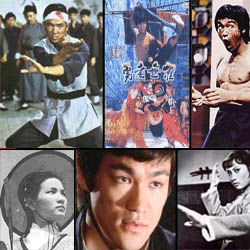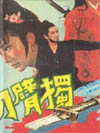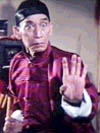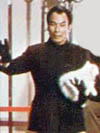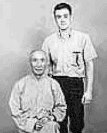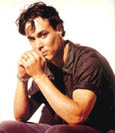
| Home | |||
| About Us | |||
| Overview | |||
| History | |||
| Women | |||
| Philosophy | |||
| Practice | |||
| References | |||
| Shaolin | |||
| Hsing Yi | |||
| Tai Chi | |||
| Bagua | |||
| Baji | |||
| Health | |||
| Other Styles | |||
|
|
|||
| Links | |||
| Directory | |||
| News | |||
1. Wuxia - the Chinese Martial Arts Fiction
ovies plays a pivotal role in popular culture. Movies offers entertainment but on another, they provide the audience with new worlds and relationships to explore. Great movies introduce new concepts and new idea that challenges the viewers. The current popularity of Chinese martial arts can be traced to the increasing popularity of the martial arts and action movies.
2. Comics, Theatre, Television (Asia, West)
3. Bruce Lee and Heroic CinemaA. Hong Kong Movies Pre-1970's
B. Bruce Lee and Heroic Cinema
C. Jacky Chan, Jet Li and many others
D. Martial Arts in Hollywood and around the world
Hong Kong Movies - Pre-1970's
he chinese movie industry started in the thirties and forties in Shanghai and Hong Kong. These movies were essentially filmed stage plays featuring classical chinese stories. The origin of the modern martial art movie is generally attributed to Hu Peng's production of "The Story of Huang Fei-Hong Parts One and Two" in 1949. For the first time, the movie emphases realism in both action and fighting. The sucess of this movie can also attribute to the use of two real life martial artists as the leads - Kwan Tak Hing, a Hung Gar expert, played the Chinese hero while his nemesis is often played by Shih Kien, a noted Eagle Claw practitioner. This movies were so popular that 96 Huang Fei Hong movies were made in the next thirty years starring Kwan Tai Hing. Realistic fighting and martial arts stories with strong Wuxia components and form the bases of the modern day martial arts movies. Examples of memorable movvies of this genre include:
- Come Drink with Me (1967) starred the great Cheng Pei-Pei direted by King Hu. She was only 17 but the movie establised her reputation as one of the great heroine in Hong Kong cinema.
- The one-armed swordsman (1967) starring Jimmy Wang Yu, directed by Chang Cheh and produced by the Shaw brothers. The first million dollar grossing movie in Hong Kong.
- Golden Swallow |(1968) starring Cheng Pei Pei
- The Return of the One Armed Swordsman (1969) a sequel again starring Jimmy Wang Yu.
- The Chinese Boxer (1970) starring Jimmy Wnag Yu
- The One Armed Boxer (1971) staring Jimmy Wang Yu
- Zatocihi and the One-Armed Swordsman (Japanese title: Zatoichi Meets his Equal) staring Jimmy Wang Yu.
- Hapkido (1972) also known as Lady Kung Fu starring Angela Mao.
One-armed Swordsman (1967)
A sword masters life is saved his servant's self sacrifice. The swordsman takes in the servants son and trains him. Jealous of the young boy, the sword master's daughter plots to have him attacked. During the attack his arm is chopped off. His wounds are attended to by a women and all is good until a bad kung fu school starts killing off towns people. After narrowly escaping death at the hand of the school, the swordsman learns the one armed sword technique and comes back for revenge.Kwan Tak Hing ( Guan Desing,1906-1996) was born in Kuangjhou and was originally a famous Cantonese opera singer known by his stage name "Sun Lang-chow". As a well-trained traditional opera performer, he was good in both the martial arts such as the bow, the whip, boxing, and folk entertainment, such as the Lion dance. His first movie was in 1933. He made at least 130 movies, and 102 of them were wusia movies, in which he mostly played Wong Fei Hung. He also acted in a TV series as Wong. He knew various types of Chinese martial arts very well, especially the White Crane Forms. Shih-Kien is probably Hong Cinema's greatest film villain. He often played opposite the legendary Kwan Tak Hing. Bruce Lee chose him to play Han in "Enter The Dragon". A trivial note - the voice of Han was dubbed by Keye Luke, Master Po from TV's "Kung Fu". In the 1970's, Hong Kong Movie scene and the martial arts movie genre is changed by the emergence of a new super star - Bruce Lee.
"Bruce stood tall. Bruce is martial arts. He made the form work. .. Say 'martial arts' and the name that pops to mind is Bruce Lee. That makes him one of the few giants in show business. That's the mark of his influence and his genius."
Bruce Lee, born November 27, 1940 in San Francisco, CA. He was born into a theatre family, his father, Lee Hoi Chuen, was a Cantonese Opera Company performer. Lee himself appeared in his first film when he was only three months old. By the time he was eighteen, he had appeared in a total of 18 Cantonese-language films.
From 1954 - 1959, he studied Wing Chung under Yip Man, Wong Shun-Leung and William Cheung. Though not often mentioned, he also learned some basic Tai Chi Chuan from his father. Even at this young age, he was more interested in the practical appliations of the martial arts. He was often in trouble with the police for fighting in the neighbourhood. His reputation as a fighter continued even when he went to the United State. One often quoted story concerns his fight with a Hung Gar practitioner in Seattle. He defeated his opponent but only after a long time. This lead him to question his training methods eventually leading to a modification of his Wing Chung practise. He explore non-tradiitonal methods of training, resulting in the creation of Jeet Kung Do. In this approach, he advocates the abandonment of traditonal forms and focus on what he believes are direct effective methods. Bruce Lee could be be seen as a proponent of "mixed" martial arts - using the best techniques of many styles. The theory of Jeet Kung Do was never completely finished since he stopped teachning the martial arts and return to his career in movies. His students continue to extend Jeet Kung Do to other venues.
Son of BruceA summary of the major events in the life of Bruce Lee are as follows:
- 1940, just three month after his birth, he joined his father on stage in a prodution of Golden Gate Girl..
- 1946, starred in the movie, Birth of a Man, continued to act in other Chinese movies until he moved to the US for school (1959).
- 1964, married Linda Emery, met Ed Parker and demonstrated at his International Karate Championships.
- 1965, his father died. In the same year, his son Brandon was born.
- 1966 starred as "Kato" in the Green Hornet series produced by William Dozie (the prpduer of Batman) - series ended in 1967
- 1960's started his new teaching style - initially called "Jun Gan Gung Fu, then "Bruce Lee's Tao of Chinese Gung Fu - Using No Way As Way; Having No Limitation as Limitation" and finally Jeet Kung Do - "The Way of the Intercepting Fist". By 1969, he had three JEet Kune Do schools (Seattle, Oakland and Los Angeles)
- Struggled in Hollywood - he played a martial arts teacher on an episode of Ironside, technical advisor of The Wrecking Crew (1969), Marlowe (1969), Longstreet (1971).
- 1971, The Big Boss directed by Lo Wei, became his break through movie in Hong Kong.
- 1972, Fist of Fury directed Lo Wei broke all box office records.
- 1973, Way of the Dragon, first movie starred, produced and directed by Bruce Lee. This movie ended with a classic fight with Chuck Norris, then seven time Karate Champion.
- 1973, July. Bruce Lee dead in the apartment of Betty Tingpei, a Taiwanese actress who was to also have a leading role in an up and coming film. The official reason was a cerebral edema (a swelling of the brain caused by a congestion of fluid).
- 1974, Enter the Dragon, the first big budget Hollywood movie, was released.
- Game of Death, was never finished. Only three fight scenes were filmed - fighting basketball star, Kareem Abdul Jabbar; fighting with his student, Dan Insanto; and finally, fighting with hapikido stylist, Chi Hon Tsoi.
- 1993, Brandon Lee died on the set of the movie "The Crow"
Bruce Lee died young and at the height of his popularity. His legend continues - his name continues to be one of the most recognized martial artists / film stars of all time. There is no question of his contribution in the popularization in popular culture.
References
[1] Asiepassion.com, in French [2003/03]
[2] Bright Lights Film Journal | Hong Kong films online edition of Bright Lights Film Journal. [2003/03]
[3] Hong Kong Cinema - View from the Brooklyn Bridge Info, news and reviews on many famous Kung Fu films and stars [2003/03]
[4] Hong Kong Movie Database , Extensive information about Hong Kong movies by genre, year, and title. [2003/03]
[5] Bruce Lee.com a non-profit web site about Bruce Lee [2003/03]
[6] TIME 100: Heroes & Icons - Bruce Lee [2003/03]
Copyright 2003
